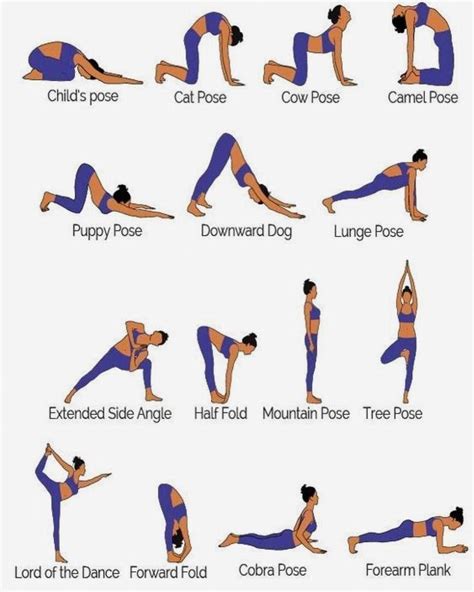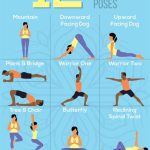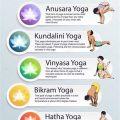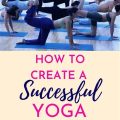Mastering Yoga: Essential Postures for Beginners and Beyond
Yoga is an ancient practice with modern-day relevance, offering benefits that range from improved flexibility to mental clarity. As a beginner, understanding basic yoga postures is key to unlocking the full potential of your practice. This guide will take you through the essential postures, providing detailed instructions, historical insights, practical applications, and expert commentary to ensure a well-rounded introduction to yoga.
Introduction
Whether you’re new to yoga or looking to deepen your practice, the foundation lies in mastering core postures. Each pose (asana) serves a different purpose, from strengthening muscles to enhancing mental focus. This article explores the most important yoga postures, offering step-by-step instructions, benefits, and modifications. By understanding not just how, but why these poses are important, you’ll cultivate a balanced and safe practice.
Key Concepts
- Alignment: The position of the body in each posture to maximize effectiveness and prevent injury.
- Breathing (Pranayama): Yoga’s integration of breathwork with movement, fostering relaxation and awareness.
- Flow (Vinyasa): The practice of linking postures in a fluid sequence, harmonizing breath and movement.
- Mindfulness: Focusing on the present moment during each posture to achieve mental clarity.
- Modifications: Adjusting poses to fit your level of strength, flexibility, or any physical limitations.
Historical Context
Yoga dates back over 5,000 years, originating in India. Traditionally, yoga was practiced as a holistic system integrating mind, body, and spirit. The postures or “asanas” were just one element of a broader spiritual and philosophical practice aimed at achieving enlightenment. Over time, yoga has evolved into various styles, with the physical postures becoming the focal point for many Western practitioners. Despite this shift, the ancient wisdom of yoga remains central, offering a bridge between the body and the mind.
Current State Analysis
Today, yoga is practiced worldwide, with an estimated 300 million practitioners globally. From studio-based classes to at-home practices, yoga has grown in popularity due to its physical, mental, and emotional benefits. However, misinformation about yoga postures and alignment often leads to injuries, especially among beginners. Proper guidance in foundational poses can mitigate these risks and lead to a long-lasting and healthy practice.
Practical Applications
Understanding the practical benefits of each posture can enhance your yoga practice. Here, we explore how each basic yoga pose supports flexibility, strength, balance, and mental focus.
| Pose | Physical Benefits | Mental Benefits | Modifications |
|---|---|---|---|
| Mountain Pose (Tadasana) | Improves posture, strengthens thighs and knees. | Promotes grounding and stability. | Use a wall for balance if needed. |
| Downward-Facing Dog (Adho Mukha Svanasana) | Stretches hamstrings, shoulders, and calves. | Calms the mind, relieves stress. | Bend knees slightly to reduce strain on hamstrings. |
| Warrior I (Virabhadrasana I) | Strengthens legs, opens hips, and stretches shoulders. | Increases focus and determination. | Shorten the stance to protect knees. |
| Warrior II (Virabhadrasana II) | Strengthens legs, improves stamina. | Builds concentration and body awareness. | Place hands on hips for more stability. |
| Tree Pose (Vrksasana) | Improves balance, strengthens legs and core. | Encourages focus and mindfulness. | Rest foot on calf instead of thigh for balance. |
| Child’s Pose (Balasana) | Gently stretches hips, thighs, and ankles. | Calms the brain, relieves fatigue. | Place a blanket under the knees for support. |
| Cobra Pose (Bhujangasana) | Strengthens spine, opens chest and lungs. | Stimulates energy, reduces stress. | Keep elbows bent to protect lower back. |
Case Studies
In practice, yoga postures are highly adaptable. Consider these examples of how yoga can be applied in different contexts:
- Physical Rehabilitation: A patient recovering from knee surgery used modified versions of Warrior I and Tree Pose to gradually rebuild strength and balance.
- Stress Relief: A corporate executive, struggling with high-stress levels, incorporated Downward-Facing Dog and Child’s Pose into their daily routine to calm the mind and alleviate tension.
- Sports Performance: An athlete incorporated yoga into their training routine, using poses like Mountain Pose and Cobra Pose to improve flexibility and reduce injury risk.
Stakeholder Analysis
Yoga practice involves various stakeholders, each with distinct needs and priorities. Understanding these can enhance the accessibility and relevance of yoga to different groups:
- Yoga Instructors: Prioritize correct posture alignment to prevent injuries and ensure long-term health benefits for students.
- Healthcare Providers: Use yoga as a complementary therapy in physical and mental rehabilitation.
- Students (Beginners and Advanced): Seek balance between physical challenge and relaxation, aiming to deepen their practice over time.
Implementation Guidelines
- Consistency: Regular practice, even for a few minutes each day, is more effective than sporadic long sessions.
- Focus on Breath: Sync breath with movement to enhance the mind-body connection.
- Personalization: Modify postures to suit your body and fitness level, respecting your limits.
Ethical Considerations
The rise of yoga commercialization has sparked debate about cultural appropriation and the dilution of traditional practices. Yoga’s Indian roots and spiritual significance should be acknowledged and respected, ensuring that modern practices do not overlook the ethical dimensions of its heritage.
Limitations and Future Research
Although yoga has well-documented benefits, more research is needed to explore its impact on mental health and long-term physical rehabilitation. Furthermore, there is a need for better educational resources that emphasize correct alignment and safe modifications, particularly for beginners. Future research could focus on the use of yoga in specific medical settings, such as for chronic pain management or mental health therapy.
Expert Commentary
Yoga continues to evolve, and the beauty of the practice is its adaptability. Experts agree that the key to success lies in mastering the foundational postures and maintaining consistency in practice. As research expands, the potential applications of yoga in fields like healthcare and education will likely grow, creating new opportunities for individuals to incorporate yoga into their daily lives. However, the importance of respecting yoga’s cultural roots and ethical implications cannot be overstated.








